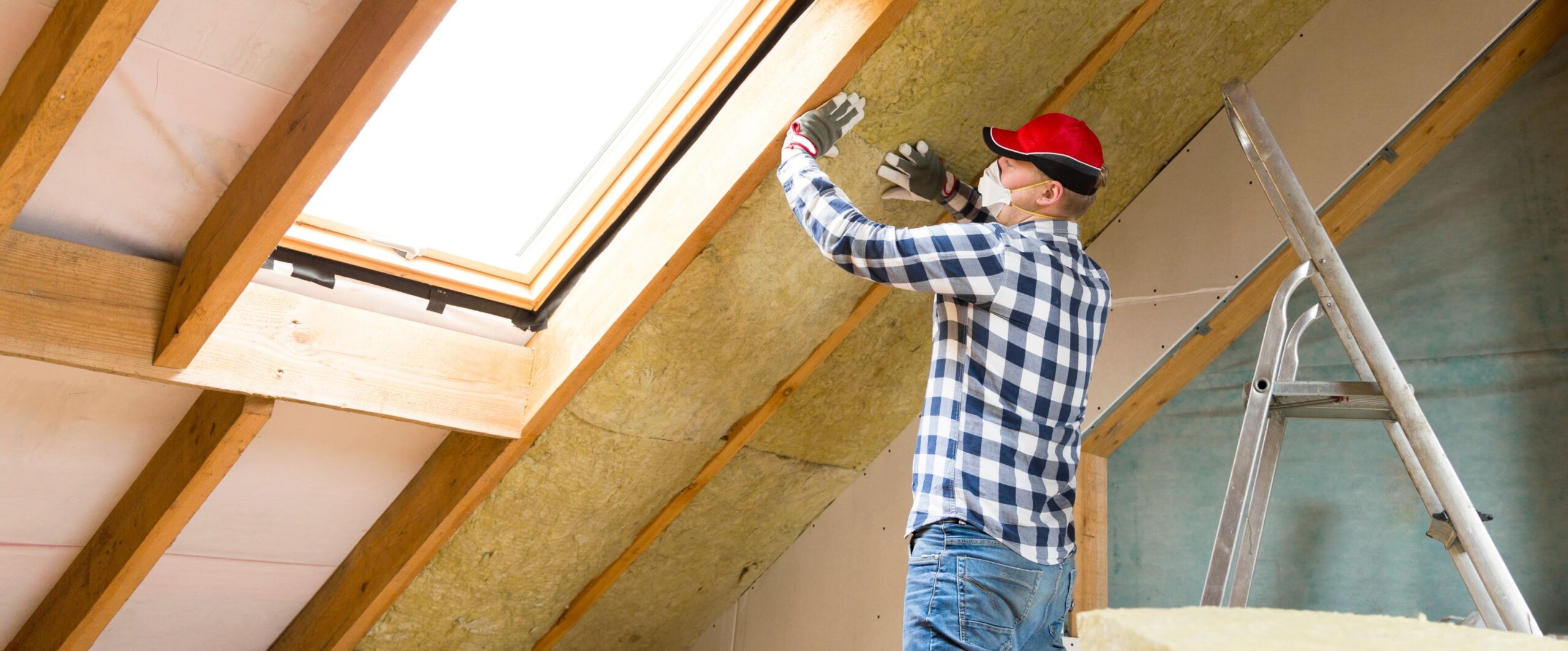
Insulation and Air Sealing
Insulation and air sealing work together to help keep your home at a consistent temperature, and are often the first line of defense in energy efficiency upgrades because they make such a big difference in your energy use.
Air Sealing involves filling in gaps that allow outdoor air to flow in where we don’t want it to. Because air is a gas, even tiny gaps that we cannot see can lead to problems with retaining temperatures.
Insulation refers to how well your walls, roofing, and other exterior features maintain the temperature barrier between indoors and outdoors.
Air sealing and insulation work together to keep your home cooler in the summer and warmer in the winter, provide energy savings year-round, and also help with soundproofing and improved indoor air quality. The U.S. Environmental Protection Agency (EPA) estimates that homeowners can save an average of 15% on heating and cooling costs (or an average of 11% on total energy costs) by air sealing their homes and adding insulation in attics, floors over crawl spaces and basements.
There are many types of insulation and air sealing projects that can improve your home’s efficiency. Scroll down to see what kinds of projects may be a good fit for your home.
Attic, Walls, Basement, or Crawlspace Treatments
The spaces between your main living area and the rest of the world are where your home is likely to transfer the most heat, whether that’s losing warmth in the winter or losing cool air in the summer. These projects can be more challenging to take on alone, but often have the greatest payoff in terms of regulating your home.


Window and Door Treatments
While replacing your windows and doors is always an option, that can get very time consuming and expensive very quickly. Other options exist that can be done for significantly less cost and with or without a contractor:
Insulation and Air Sealing FAQ
Insulation and air sealing often yield comfort improvements in homes. How much those issues are improved may depend on the current status of your insulation and air tightness and if there are other issues to take into account. Getting a Home Energy Audit can help determine what’s causing those comfort issues.
There are many insulation products to use that have different pros and cons. Visit this Department of Energy webpage detailing the various insulation products to learn more.
Many contractors have preferred vendors they use when selecting insulation products, so we recommend consulting with them on what they might think is the best fit for your home.

Ready to get started?
Some projects can be taken on as a DIY, while others would benefit from hiring a contractor to ensure best results. If you’re ready to start making calls and getting quotes, EnergySmart is here to help:

Not sure where to start?
Get a FREE custom guide for upgrading your home. By answering just a few questions, you can get personalized recommendations, cost estimates, rebate information, and more.
